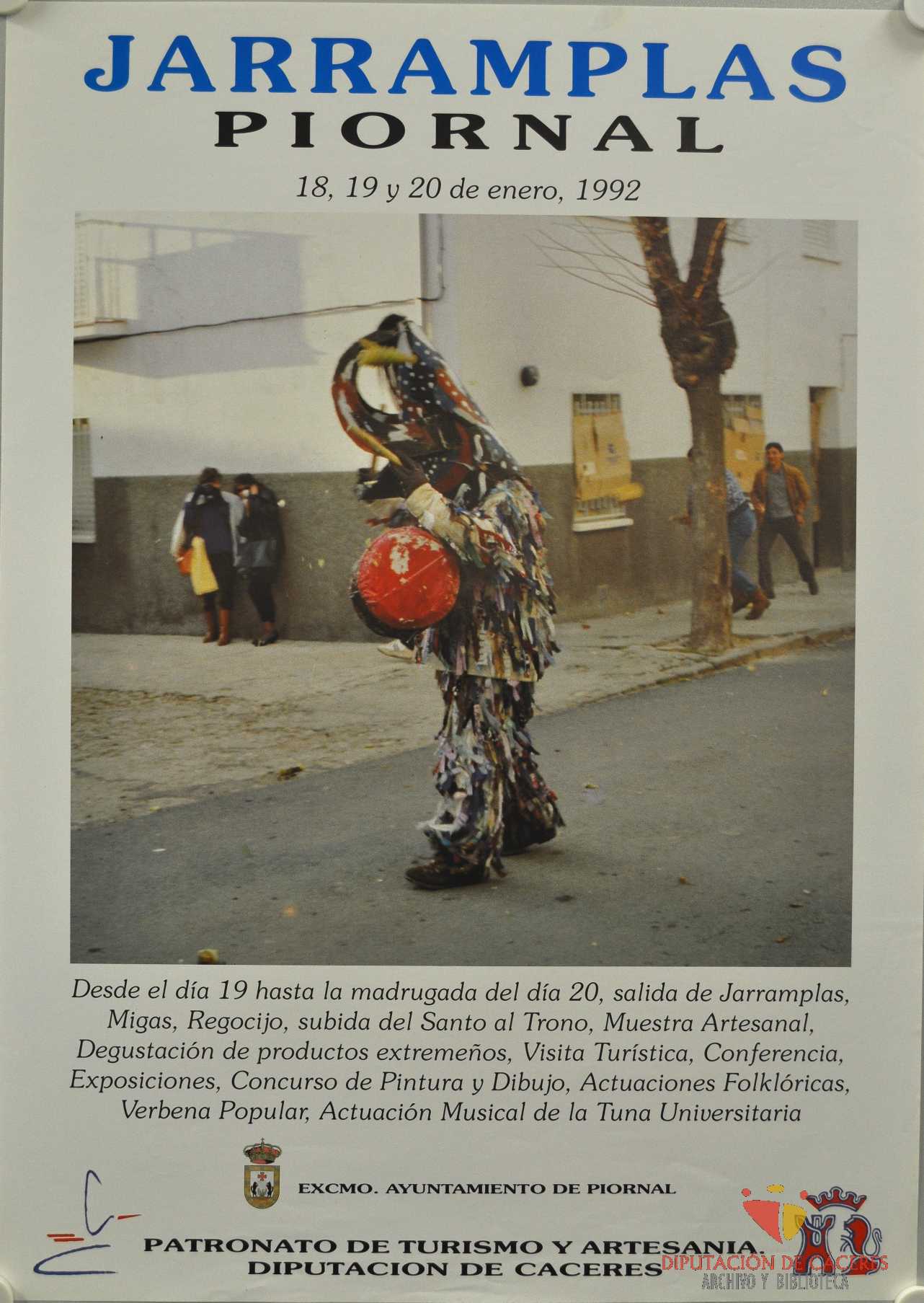EFEMERIDES: EL JARRAMPLAS DE PIORNAL
«Wide trousers, oversized homemade canvas jacket adorned with multicolored ribbons, huge shoes, leather gloves, and head protected by a conical mask with a horsehair tassel hanging from its tip. Two simulated horns protrude from the area of the ears, and from his enormous mouth emerge two rows of challenging teeth.»
This is how the attire of the Jarramplas is narrated in a 1970s documentary. Today he may be protected with fiberglass under the suit, but little else has ever changed in a festival that has been celebrated for over four centuries. Every January 19th and 20th, Jarramplas walks the streets of Piornal, in Cáceres, disguised in these colorful rags, banging a drum under a rain of turnips thrown at him by the multitude.

El Jarramplas de Piornal by Cristina García Rodero
The exact origin of the tradition remains uncertain. Some coplas hint that he was a soldier from the fields of Italy, suggesting his costume might echo those worn during the Wars of Naples in the early 16th-century. Another legend says Jarramplas was a cattle thief caught in the act, cornered by the community, mocked, and punished. In this sense, he embodies a threat for the tribe’s survival, as livestock was essential to the economy of the region.


Every year, a young man from Piornal—thus far, never a woman—braves the harsh winter of the Sierra de Tormantos, sometimes with the streets blanketed in snow, to assume the role of Jarramplas. His mission consists in withstanding the relentless blows of the turnips for as long as possible while beating the drum in a dance-like movement, until he can endure them no more and stops drumming.
Being chosen as Jarramplas is a source of pride and a memorable life experience for every piornalego. In fact, the parish maintains a waiting list that currently extends until 2048. The ritual is also considered a representation of the martyrdom of Saint Sebastian, the village’s patron saint, whose feast is celebrated during the same days. If there is one motivation above all others to take the role, it is the manda or promise—a commitment made to the Saint in exchange for divine intervention in dire times: "If you assist me or my family in our need, I pledge to be Jarramplas."



The masked creature assumes the function of the Athenian pharmakós—a slave, cripple, or criminal sacrificed or expelled from the community to bring about purification during times of disaster. In ancient Greece, the pharmakós would be paraded through the streets while people threw objects at them. While the victims were subjected to ridicule and anger, they were also revered as a crucial part of the ritual. Their death or expelling converted harmful violence into violence that was beneficial, restoring peace and bringing fertility.
The horns on the mask of Jarramplas can be understood in the context of the winter solstice rituals practiced by the Celtic tribes once settled in what is now Piornal. These ceremonies heralded the end of darkness and the arrival of spring, often focusing on fertility and featuring characters with animal masks. In Celtic cosmology, the goat horns of the Jarramplas are directly related to fecundity. For pastoral communities, livestock that could reproduce symbolized regeneration and sustenance, while sterility marked periods of scarcity.
Although the mask perishes every January to return again a year later, the festival remains vibrant and alive, straddling pagan celebration and Catholic mysticism. Jarramplas represents a crucial thread in the Spanish cultural fabric that still has many stitches left to weave. But, if you ever visit Piornal to see him, watch out for the turnips.

Archivo de la diputación de Cáceres

Poster from El Jarramplas, 1999.

Poster from El Jarramplas, 2012.

Poster from El Jarramplas, 1996.


Jarramplas - "Raíces" RTVE
discover más